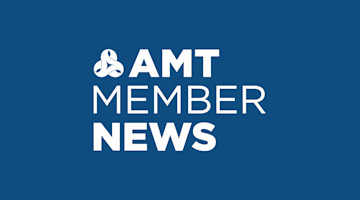Despite growing market demand, the additive manufacturing (AM) industry is experiencing several challenges to more rapid growth. These include industry regulations, standards development, and quality assurance (QA).
The QA of AM-produced metal parts is probably the greatest obstacle affecting the speed of AM technology adoption. Powders, print processes, and final parts are subject to a level of variability in terms of chemical and mechanical quality that cannot be tolerated in a production environment. Rigorous quality standards and inspections are necessary to ensure the consistency, repeatability, and reliability of final parts. Planning, building, and implementing a certifiable QA process requires time, training, and resources as well as investment in new technologies, processes, and talents.
Metal powder chemistry must be consistent in every batch, including particle size distribution, composition, size, and shape. Additionally, for safety-critical applications such as aircraft parts or medical devices, the material used must be 100% free of contamination because impurities can alter the properties of the final part. Metal powders can become contaminated during the printing process, storage, transportation, and handling.
“AM is turning out to be more complex than people realized,” said Dr. Marcin Bauza, Head of ZEISS Additive Manufacturing Process and Control. “There are so many variables that affect the production of a part. The same batch of powder from the same vendor can produce different physical and mechanical properties in different locations of the final product depending on how the powder is processed and the heat treatment method used. For example, the size distribution of individual powder particles influences how the powder is compacted and the density of the build, possibly creating defects visible later in the process.”
Destructive testing of hundreds of copies of final parts to ensure quality is cost prohibitive for any type of production and cancels many of AM’s operational advantages. Non-destructive testing is the only viable option, and these methods and standards are still evolving.
Maintaining the consistency and repeatability of the printing process to ensure build quality over time is another challenge. Process control must be established for printing equipment to ensure that end products are consistent from part to part. It is not uncommon to need to measure more than 100 initial samples before the tools are adjusted sufficiently to enable volume production to start. For example, a laser powder bed machine can drift from its optimal settings relatively quickly, and during fused deposition modeling, vibration can occur on the print head.
Next, final parts need to be examined for their material properties to ensure they have not experienced changes in microstructure during processing. This includes examination of chemical composition, density, porosity, mechanical strength, tensile strength, stiffness, internal part geometry, surface quality, and finish.
“An additional cost that needs to be factored into AM is the need for post-processing,” said Dr. Jason Jones, CEO, Hybrid Manufacturing Technologies. “3D printing was developed in isolation from manufacturing and was initially a design and prototype-oriented activity based on polymers where post-processing could be done pretty easily and cost effectively. But since metal is now being used for actual production parts, substantial post-production finishing is always a requirement. This takes time and requires inspection.”
Read part one here.
Read part two here.
Read part three here.
To learn more about the role of AM in manufacturing read our white paper here.





